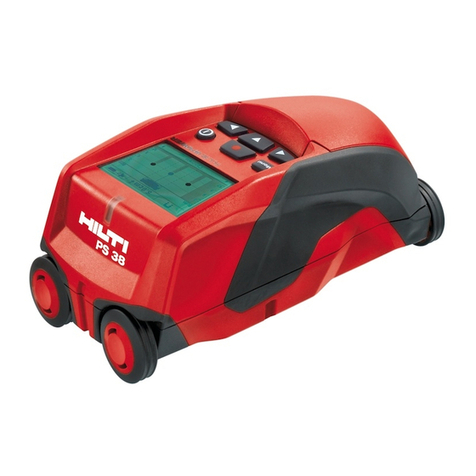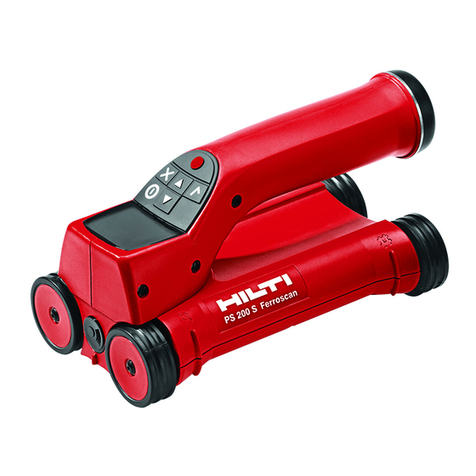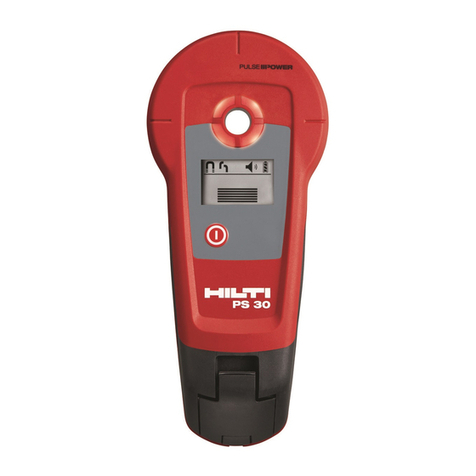Hilti PS 1000 X-Scan
tips & tricks
V 1.0 I 05/2011
Interpreting scans of profile metal sheet composite decks
Concrete decks are often formed by pouring concrete over profile metal sheets.
Layers of reinforcement or other cast-in objects are positioned above the profile metal sheets,
making detection more difficult. The uppermost layer of reinforcement can be detected
without any problem. Detection of the profile sheet metal is much more difficult as it cannot be
made clearly visible as a sheet, and tends to look like another layer of reinforcement.
Interpreting scans of floor heating systems
In the analysis view, floor heating systems are characterized by the way the pipes are typically
laid in a pattern of loops. At a depth of approx. 50 mm under a layer of screed, the pipes are
generally equally spaced but are often positioned closer together at potential cold spots.
If a metallic insulating foil has been placed beneath the pipes, the signal from the scanner is
reflected over the entire area. Such reflections can make it more difficult to detect the objects
in the floor. The scanner’s detection performance can also be negatively affected by multiple
layers or coverings consisting of a fine mesh. Accordingly, the plans showing details of the
installation should be checked first in order to determine whether a scanner employing radar
technology is capable of providing meaningful results.
0,
Interpreting insulating layers
Scanning through an insulating layer has, in principle, an adverse effect on the quality of the
results obtained. A layer of this kind often causes reflections, similar to those caused by the
back surface of a wall or slab. “Ghost” objects (objects that don’t exist) may be shown as
result. When possible, structures such as this should be scanned from both sides.
Tip: Try two different permittivity values (in the settings under “Concrete”) when using
Hilti PROFIS PS 1000 to analyze the scan results.
An insulating layer consisting of a metallic material always causes strong signal reflection.
It is thus not possible to detect objects positioned beneath layers of this kind.
Interpreting scans of pre- and post-tensioning tendons
Tendons are typical “second-layer” objects, over which there is usually a layer of reinforce-
ment in a grid with the bars spaced at various intervals. In the analysis view, tendons are
characterized by the fact that their depth does not remain constant.
This means that they may be shown at one side of the image but gradually disappear due to
the change in depth at other positions allong their length.
Furthermore, tendons usually do not lie parallel to the bars in the reinforcement grid.




























